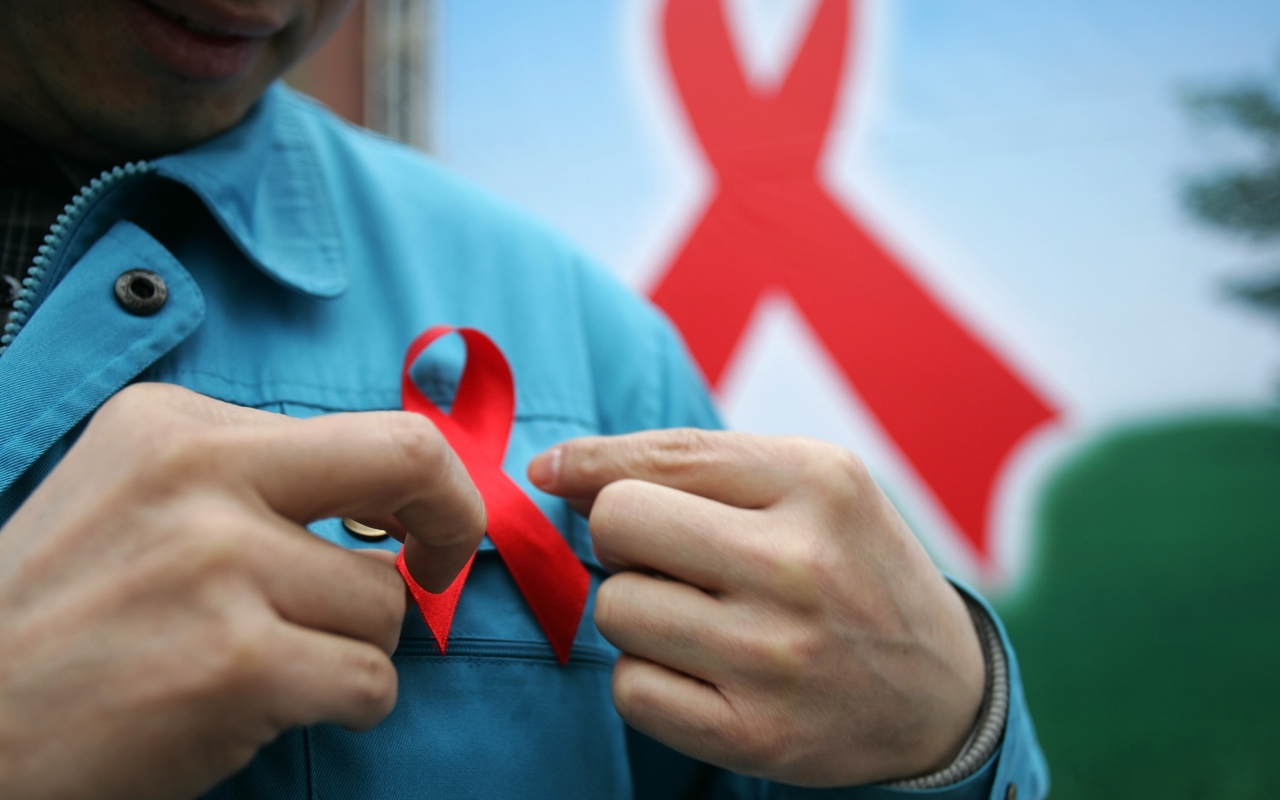The threat of HIV/AIDS is not an illusion. “It is very real and very close,” said Health Minister Hassan Qazizadeh Hashemi on the occasion of World AIDS day on Thursday.
“The fact that the disease has been contained in Iran does not mean the threat is gone, and people, youth in particular, must take precautionary measures against the virus,” he said in a message for the global AIDS event observed annually since 1988 on December 1, Mehr News Agency reported.
World AIDS Day is an opportunity for people worldwide to unite in the fight against HIV and show their support for people living with HIV.
Noting that the health network uses up-to-date practices and measures, providing information on how to prevent HIV transmission, Hashemi said Iran is among the few countries in the Middle East and North Africa that has created a competent screening and evaluation system for HIV/AIDS.
Soon after taking office in the summer of 2013, Hashemi announced a nine-fold growth in the number of people with HIV/AIDS over the previous 11 years and an 80% increase year-on-year.
It is estimated that 75,000 HIV-infected individuals are living in the country. The cases registered during the last year (ended in March), and the first three months of the current year indicate that of all the registered HIV infections, 34% are among women, according to Dr. Fardad Doroudi, UNAIDS executive director in Iran.
Tip of the Iceberg
Hashemi said the figures are only the tip of the iceberg. “We predict the real figure far exceeds the present statistics, since many of the patients do not divulge the painful reality of their being HIV positive, and thus remain unaccounted.”
State health officials have admitted that the rate of sexually-transmitted HIV/AIDS has doubled over the past couple of years in Iran, with the transmission pattern having shifted in recent years from needles/syringes to sexual transmission, seeing an increase to 30% from the earlier 15%.
In a culture where sexual matters are taboo, sexually-transmitted diseases have been pushed to the background over fears of social ostracism and marginalization. This has contributed to HIV-related challenges for the health authorities and the public at large, preventing those infected from seeking diagnosis and treatment.
Head of Health Ministry’s AIDS Control Office, Parvin Kazerouni, believes that the statistics indicate the impending threat of the disease.
“Up to June 2016, the official figures showed 32,670 HIV positive individuals, with men accounting for 84% of the total,” she said.
Shirin Ahmadnia, head of Prevention of Social Vulnerabilities Department at the State Welfare Organization warns that high-risk sexual behavior is contributing to the spread of AIDS.
Ali Akbar Pourfathollah of the Iranian Blood Transfusion Organization (IBTO) also criticizes the attitude towards the issue in the country.
“The approaches toward HIV/AIDS must provide for more transparency and detection of unidentified cases,” assuring that the rate of HIV infection in blood transfusion is zero in the country.
Leading Cause of Death
Globally, AIDS remains a leading cause of death among adolescents, claiming the lives of 41,000 adolescents aged 10-19 in 2015, according to the 7th stocktaking report on ‘Children and AIDS: For Every Child, End AIDS’.
There are an estimated 34 million people who have the virus. More than 35 million people have died of HIV or AIDS since its discovery in 1984, making it one of the most destructive pandemics in history.
New HIV infections among adolescents are projected to rise from 250,000 in 2015 to nearly 400,000 a year by 2030 if progress stalls in reaching adolescents, warns a report released by the United Nations Children’s Fund (UNICEF) on the international occasion. Every two minutes, a new adolescent – most likely a girl – will be infected with HIV.
Successful Program
Treating HIV-infected people with antiretroviral (ARV) drugs is one of the most important aspects of Iran’s 4th National AIDS plan which took off in October 2015. It will help patients lead longer and productive lives. The drugs can help reduce the risk of transmitting the virus to patients’ uninfected partners by 96%.
Providing ARVs to mothers during delivery can also eliminate mother-to-child transmission (MTCT) of HIV. A wide range of educational programs and projects are also being implemented within the framework of the plan in cooperation with the United Nations Program on AIDS and more than 16 international organizations are contributing to the execution of the plan.
It includes ten items under five major goals: reducing HIV prevalence rate to less than 0.15% among the general public; less that 13% among substance-abusers, and less than 5% among people at risk through sexual transmission. It will also try to bring down MTCT by 90% and deaths from AIDS-related diseases by 20% within the timeframe (2015-2019).
Iran has adopted a pragmatic approach in fighting HIV/AIDS, and is implementing effective programs in this regard with the participation of civil society.
It has also adopted the WHO plan to fast-track ending of the disease. The UNAIDS 90-90-90 treatment target says that by 2020, 90% of people living with HIV should know their status, 90% of them should receive treatment and 90% of those on treatment should have suppressed viral loads (very low levels of HIV in the body).
Since 2007, globally the number of people using life-saving HIV antiretroviral therapy has increased from 2.9 million at the end of 2006, to 18.2 million in June 2016.


